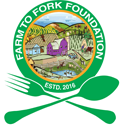RAPD analysis of Brassica napus with introgressed cross and reciprocal of 6th generation lines
Keywords:
Brassica napus, RAPD, Genetic relationship, Gene diversity, Polymorphic band, Reciprocal effectAbstract
Assessment of the genetic variation and relatedness among the genotypes of Brassica napus is of great importance for variety selection, breeding purpose, hybridization, evaluation and conservation of the diverse gene pool. Random Amplified Polymorphic DNA (RAPD) assay was conducted to characterize two different varieties of Brassica napus viz. BINA Sarisha-4 (D), BINA Sarisha-5 (E) and their sixth generation cross and reciprocal cross selection progeny lines. Total genomic DNA was isolated from Brassica leaves following SDS extraction, Phenol: Choloroform: Isoamyl alchohol purification and ethanol precipitation method followed by using four decamer random primers to amplify genomic DNA. A dendrogram was constructed using unweighed pair group method of arithmetic mean (UPGMEA). The primers produced 26 RAPD bands of which 13 were considered as polymorphic. The percentage of polymorphic loci is 50%. The proportion of polymorphic loci and gene diversity estimates were 11.54% and 0.049 for the cross progeny BINA Sharisha-4 (D) × BINA Sarisha-5 (E); 26.92% and 0.1241 for the reciprocal cross selection progeny BINA Sarisha-5 (E) × BINA Sarisha-4 (D); 23.08% and 0.1054 for BINA Sarisha-5 (E); 3.85% and 0.0115 for BINA Sarisha-4 (D). High level of differentiation between the varieties (D) & (E) (Gst = 0.6553) and low level of gene flow (Nm = 0.2630) estimates across all loci reflected the existence of high level of genetic variation between two parents and cross and reciprocal cross progeny lines. The UPGMA dendrogram based on Nei’s (1972) genetic distance indicated segregation of 4 accessions into two major clusters. Cluster one consists of cross and reciprocal cross selection progeny lines of (D) and (E) where they are closely related with the least genetic distance (0.1697). While the two parents (E) and (D) were grouped in cluster two. The highest genetic distance (0.3043) was observed between the reciprocal cross progeny lines (E) × (D) and the parent (D), which was the widest genetic diversity. The RAPD is a simple and fast technique to compare the genetic diversity and the patterns of variations between the varieties and progeny of Brassica spp.
Downloads
Downloads
Published
How to Cite
Issue
Section
License
Copyright (c) 2016 by the author(s). This work is licensed under a Creative Commons.

This work is licensed under a Creative Commons Attribution-NonCommercial 4.0 International License.





















